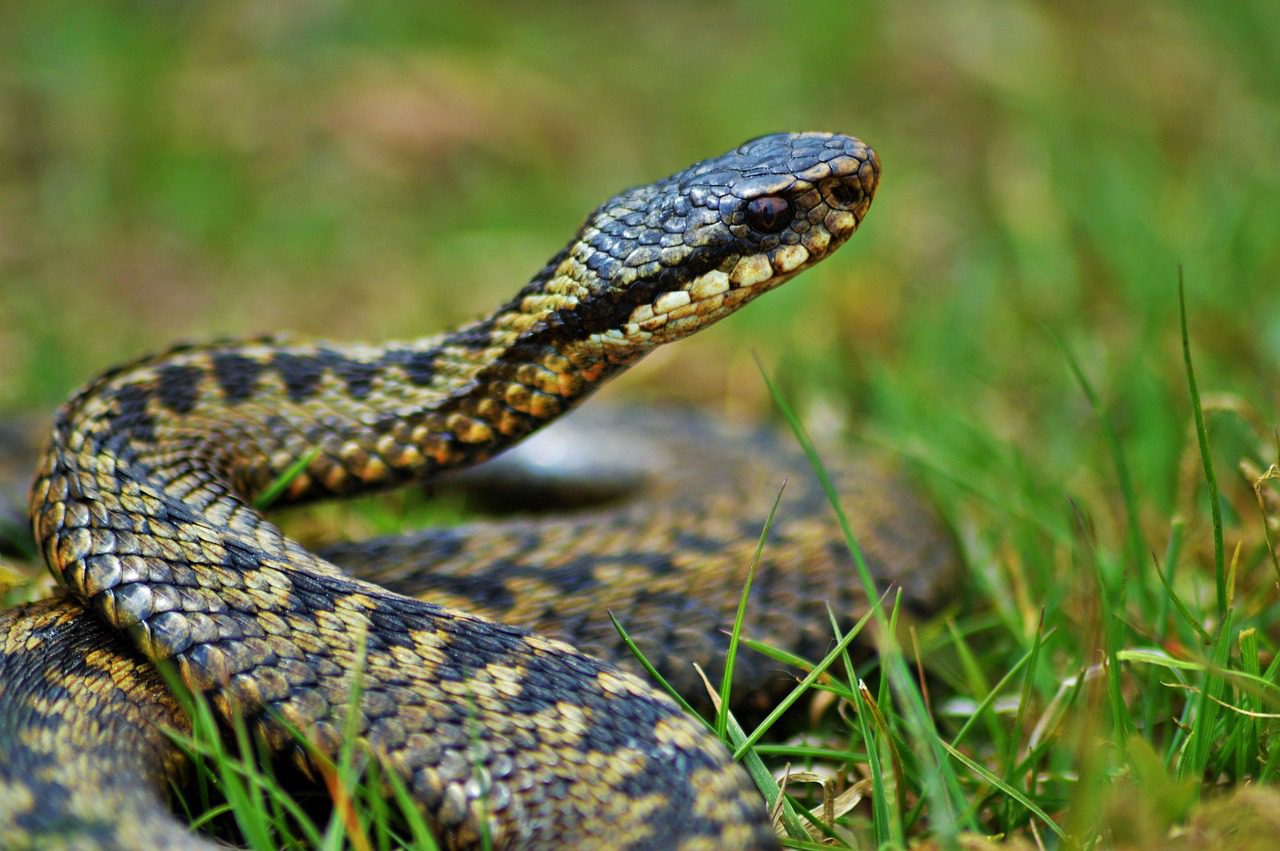The only species of venomous snake in the UK is the adder.
All snakes are protected by the Wildlife and Countryside Act 1981, which made it illegal to
disturb, kill or injure them in the UK.
The only problem is that our dogs have not read this Act very carefully.
When I teach my first aid courses, I discuss how to tell if you think your pet has suffered a
snake bite.
If you see it happen, it may be very obvious what has happened. There may be a cry, and
then the dog comes rushing back, possibly limping. They quickly become distressed and off
colour.
Some dogs of the more bullish temperament might start barking and get over-excited, almost
inciting the snake to have another go.
You might see and be able to identify the adder slipping away. They are shy, and will not
attack unless disturbed, preferring to avoid confrontation wherever possible.
But, in some cases, an animal might just seem poorly. They will gradually worsen.
Depending on the length of the fur you may see swelling of one leg, or the face, and they
may favour one leg, or refuse to move altogether.
At the vets, we recognise a high fever, and severe pain with swelling in the local area. We
rarely find the tooth entry points, and there is generally very little bleeding.
The problem is a combination of the venom and the germs injected. The amount of venom
will vary depending on when the snake last bit some prey. It is dangerous in proportion to the
size of the creature bitten. So a small dog will be more unwell than a large one.
But the snake’s mouth is full of germs, which are pushed deep under the skin during the bite,
so an abscess and sepsis (blood poisoning) are real potential complications too.
If you suspect your pet has suffered a snake attack, you do not perform any suck and spit as
if you were Crocodile Dundee.
Just carry them as quietly and calmly as you can to a vehicle, and get them to the nearest
available vet clinic.




